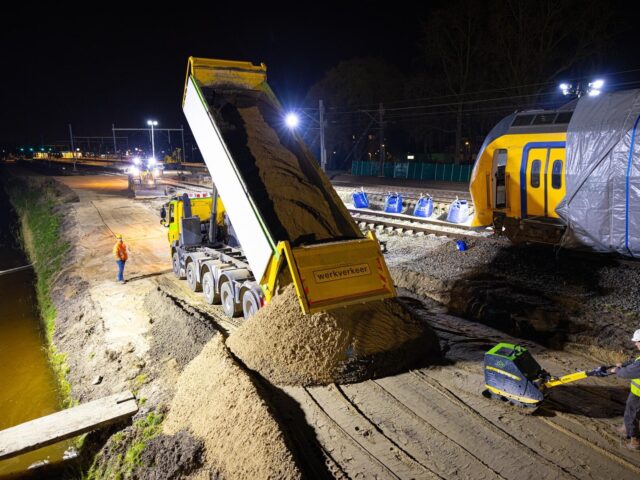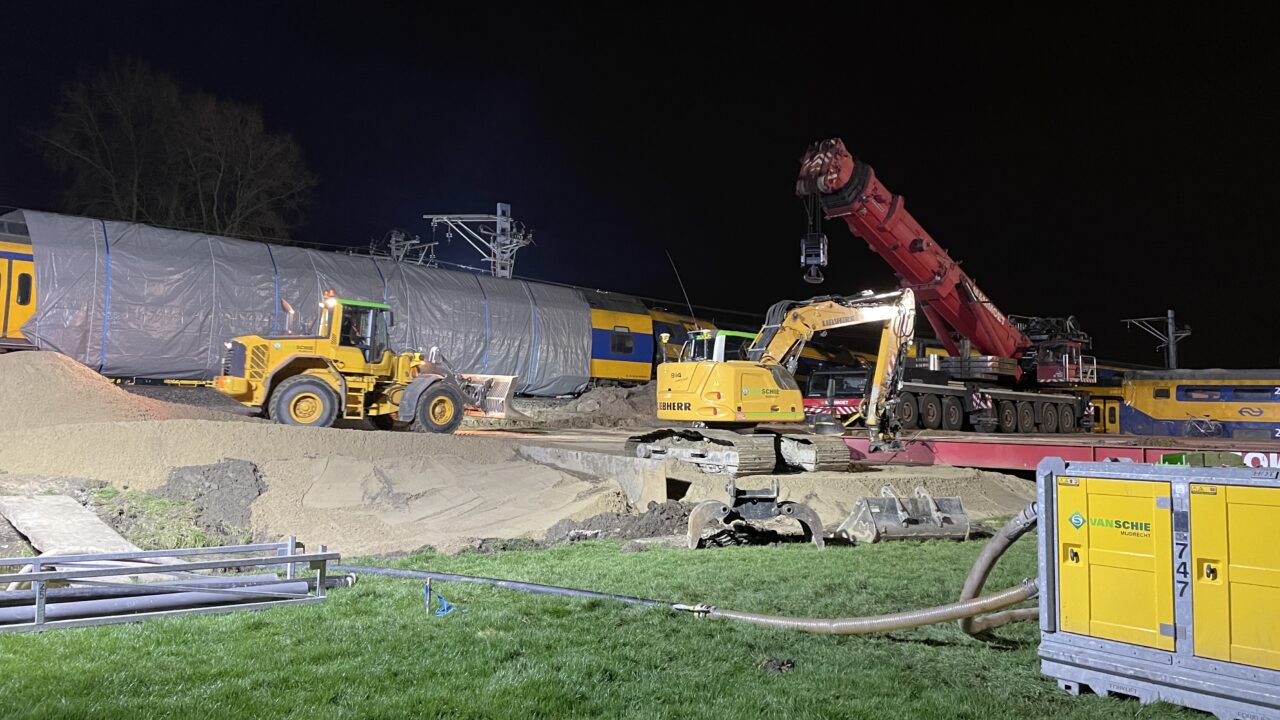Emergency services were on the scene very quickly and a plan was immediately made to evacuate the railcars from the meadow. This included an important role for Van Schie. When the experts from ProRail and the NS mapped out the situation, it was very quickly clear that it would take an incredible amount of work to get the train sets out of this swampy meadow. In order to reach the accident site with (very) heavy equipment, an emergency road would first have to be built. Because to elevator the train sets, two mobile cranes were needed: 400-ton cranes, both deployed by Mammoet. But getting those cranes in the right place and setting up a stable staging area there was an even bigger challenge. All disciplines from the GWW sector were needed here. And that is precisely why they soon came to Van Schie. The company from Mijdrecht is available 24/7, has all disciplines in house, is familiar with the types of soil in the Green Heart and is prepared for emergencies.
Projects
The train disaster
The train disaster near Voorschoten – earlier this year – is no doubt still fresh in many people’s minds. On Tuesday, April 4, around 3:30 a.m., an Intercity and a freight train collided with a construction crane, with fateful consequences. The driver of the construction crane died; thirty other people were seriously injured. Both trains derailed, and the massive impact sent two of the four railcars crashing into a meadow.

Accessibility
The disaster site could not have been more unfortunate. Extremely difficult to reach and, in addition, it turned out that there was a water main under the meadows that had to be passed in three places. So for these three spots, an overpass had to be built first, consisting of an additional sand package and a bulkhead platform. Temporary culvert pipes were also installed. Over these, the roadway could then be laid: 280 meters along the track and 350 meters through the meadow. Since one train set had landed across the railroad ditch, that ditch also had to be dredged and filled with fresh sand to create a stable surface. The dredged material was transported to the company’s own soil bank in Mijdrecht. The final installation site for Mammoet’s cranes was the biggest job. The water pipeline ran under this very spot. The platform that was built here consisted of double layers of wooden bulkheads, extra-heavy steel bulkheads from Mammoet itself and steel bulkheads from Van Schie, all filled with sand. In short, a mega job. Someone calculated that there was a total of more than a million pounds of equipment and machinery on the meadow.
Human & material
For a calamity of this magnitude, a lot of manpower and equipment had to be deployed in a short period of time before Mammoet’s heavy cranes could salvage the two railcars:
- For three days around the clock, crews from Van Schie (in compositions of 20 men) were on the job to make the cranes’ siding accessible and ready for lifting.
- Twelve trucks (sand tippers and flatbed trailers), were needed for the continuous supply of sand, as well as the removal of dredge from the railroad ditch.
- Over a distance totaling 630 meters, a temporary roadway had to be constructed, on a sand package.
- For the crane siding: 16 steel bulkheads with a length of 14 meters, in addition to Mammoet’s ultra-heavy bulkheads.
- Hundreds of wooden bulkheads, including for the three enclosures.
- Excavators and shovels for moving soil.
- Temporary culvert tubes from HP Steel.
- Temporary steel bridge from Janson Bridging.
- Various generators for power, etc.
- Van Schie was also responsible for “vacuum” wrapping the railcars in protective film before they were transported.
Feel free to drop by for a cup of coffee!
Call us at 0297 – 237537 or email us at info@vanschie.com.









